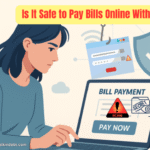What is a Cease-and-Desist Letter? Complete Guide for Consumers
In an era where personal rights and online interactions overlap constantly, understanding how to legally protect yourself is more important than ever. Whether you are dealing with harassment, defamation, debt collection threats, or copyright violations, a cease-and-desist letter can be a powerful first line of defense.
This comprehensive guide will explain what a cease-and-desist letter is, why it matters, when to use it, and how you can create one effectively — without needing a lawyer in most cases.

What is a Cease-and-Desist Letter?
A cease-and-desist letter is a formal written notice that demands an individual, business, or organization immediately stop a specific activity that violates your rights or causes harm.
The phrase “cease and desist” literally means “stop and do not continue.” Such a letter is not a court order, but it holds legal significance as it puts the recipient on notice that their actions are unlawful and must stop immediately.
The letter serves two main purposes:
- To inform the other party that their behavior is infringing upon your rights.
- To warn that legal action may follow if the misconduct continues.
Even though it’s not legally binding by itself, a cease-and-desist letter is often enough to resolve disputes without stepping into a courtroom. It shows seriousness, establishes a legal record, and encourages the recipient to change their behavior before facing formal consequences.
The Legal Purpose of a Cease-and-Desist Letter
The primary purpose of a cease-and-desist letter is to protect your legal and personal rights. It serves as an official notification that the recipient’s actions are unacceptable and could lead to further legal consequences if not stopped.
Here’s why such letters are widely used by consumers and professionals alike:
- Acts as a Formal Warning
The letter notifies the offender that their actions violate your rights. This gives them an opportunity to stop voluntarily before facing formal legal action. - Creates a Record of Notice
It serves as written evidence that you attempted to resolve the issue amicably before escalating the matter to court. - Prevents Further Damage
By alerting the offender early, you can stop ongoing harm such as defamation, harassment, or financial loss. - Avoids Costly Litigation
Many disputes end after a cease-and-desist letter because it signals readiness to escalate legally if ignored, saving both sides from expensive legal battles. - Establishes a Paper Trail
If the problem persists, the letter provides proof of communication and your efforts to resolve the situation responsibly.

When Should You Use a Cease and Desist Letter?
Consumers can use cease and desist letters in many situations — from personal harassment to business-related disputes. Here are the most common scenarios where issuing one makes sense:
1. Debt Collection Harassment
If debt collectors are contacting you excessively, using abusive language, or violating your rights under the Fair Debt Collection Practices Act (FDCPA), a cease-and-desist letter can stop their communication immediately.
Once they receive it, they can only contact you to confirm they’ll stop or to inform you of any intended legal action.
2. Defamation and False Statements
If someone spreads lies that damage your reputation, either online or in person, you can use a cease-and-desist letter to demand that they stop making false statements and remove any defamatory content.
3. Intellectual Property Infringement
If your trademark, logo, writing, or creative work is being used without permission, this letter can instruct the offender to stop the misuse and remove infringing content.
4. Harassment or Stalking
In cases of unwanted messages, threats, or personal harassment — whether digital or physical — a cease-and-desist letter formally tells the person to stop contacting you or face legal consequences.
5. Contract or Business Disputes
If a contractor, client, or business partner breaches an agreement or uses your property without authorization, the letter can serve as a strong warning to rectify the violation before further escalation.
6. Privacy Violations and Data Misuse
If someone shares your private information without consent or exposes sensitive data, sending a cease-and-desist letter can help you enforce your privacy rights and limit damage.
Key Elements of a Cease-and-Desist Letter
A cease-and-desist letter should be clear, factual, and professional. To ensure your message is taken seriously, include the following key components:
- Your Details
Start with your full name, address, and contact information. This establishes credibility and formality. - Recipient’s Information
Include the name, title, and address of the person or organization you’re addressing. - Subject Line and Date
Always include “Cease and Desist Letter” as the subject, along with the current date. - Description of the Offending Behavior
Briefly explain what the other party has done, including dates, examples, or references to evidence. Keep it factual, not emotional. - Legal or Personal Rights Violated
Clearly state what rights have been infringed — for example, harassment laws, copyright laws, or contractual terms. - Formal Demand to Stop
Use unambiguous language such as:
“You are hereby required to cease and desist from [specific activity] immediately.” - Consequences of Non-Compliance
Mention potential actions you’ll take if the behavior continues, like filing a complaint or taking legal action. - Deadline for Compliance
Provide a clear timeframe (usually 7–14 days) for the recipient to respond or confirm compliance. - Closing Statement and Signature
End the letter formally with your printed name and signature.
Step-by-Step: How to Write or Generate a Cease and Desist Letter
A properly written cease and desist letter can make the difference between a quick resolution and a prolonged dispute.

Here’s how to create one effectively:
Step 1: Identify the Problem Clearly
Be precise about the issue. Identify the behavior you want stopped, such as harassment, defamation, or unauthorized use of your work. Avoid emotional language and focus on facts.
Step 2: Gather Evidence
Collect any evidence that supports your claim — emails, screenshots, messages, or witness statements. This strengthens your position if the recipient disputes your claims.
Step 3: Use a Professional Tone and Format
Your letter should look like an official document — professional font, proper alignment, and no slang or threats. The goal is to appear credible and serious.
Step 4: State the Violation and Its Impact
Briefly explain how the recipient’s behavior violates your rights and what harm it’s causing — financial, emotional, or reputational.
Step 5: Make Your Demand Clear
Tell the recipient exactly what you expect them to do. For example:
“You are instructed to immediately cease all communication with me regarding this matter.”
“You must stop publishing or sharing defamatory statements about me.”
Clarity is critical — vague demands can lead to misinterpretation.
Step 6: Mention Legal Consequences
Explain the possible next steps if they fail to comply, such as reporting the matter to authorities, consulting an attorney, or filing a lawsuit.
Step 7: Review and Proofread
Make sure your letter is concise and error-free. Poorly written letters can appear unprofessional or lose impact.
Step 8: Send It via Traceable Delivery
Always send the letter through certified mail or email with a confirmation receipt. This gives you proof that the recipient received the notice, which can be useful if legal action follows.
Try our FREE Debt Collection Cease and Desist Letter Generator Tool.
📄 Generate your letter today in just 3 clicks!
Can You Write a Cease-and-Desist Letter Without a Lawyer?
Yes — in many cases, you can write a cease-and-desist letter without a lawyer. Consumers often handle personal matters like harassment, defamation, or debt collection harassment themselves.
However, it’s important to recognize when professional help is needed. You should consult an attorney if:
- The situation involves complex legal rights or business disputes.
- The offending party is a company or public organization.
- You are seeking financial damages or court enforcement.
A lawyer ensures that your letter uses precise legal language and carries more weight in serious disputes. Still, for most individual situations, a well-written personal letter is often enough to stop unwanted conduct.
Common Mistakes to Avoid
Even though cease and desist letters are straightforward, small errors can reduce their effectiveness or backfire. Avoid these mistakes:
- Using Aggressive or Threatening Language
Stay calm and professional. Threats or insults can weaken your legal position. - Being Too Vague
Always describe the issue specifically — what happened, when, and why it’s a violation. - Skipping Evidence
Make sure your claims are supported by facts or documentation. - Setting Unrealistic Deadlines
Allow enough time for the recipient to respond. Seven to fourteen days is generally reasonable. - Sending It Casually
Don’t send cease and desist notices through text or informal chat. Always use a formal letter or email. - Not Keeping a Copy
Keep copies of everything — your letter, supporting documents, and proof of delivery.
What Happens After Sending a Cease-and-Desist Letter?
Once the letter is sent, several outcomes are possible:
- The Behavior Stops Immediately
In many cases, the recipient complies right away. They may not have realized the seriousness of their actions until receiving formal notice. - The Recipient Responds or Negotiates
Sometimes, the other party may reach out to discuss a resolution or clarify misunderstandings. Handle such communications carefully and professionally. - The Letter is Ignored
If they continue the behavior, your next step is to escalate the matter legally. You can consult a lawyer to file a lawsuit or seek a court injunction.

The key takeaway is that even if the letter doesn’t immediately stop the behavior, it strengthens your position for any future legal action by proving you attempted to resolve the issue first.
Final Thoughts
A cease-and-desist letter is one of the most effective and affordable tools to protect consumers’ rights and stop harmful actions. It’s formal, yet accessible — and it often resolves problems faster than people expect.
Whether you’re dealing with harassment, defamation, privacy violations, or debt collection harassment, sending a properly written cease and desist letter can help you regain control and safeguard your personal or professional integrity.
While it’s not a guaranteed legal solution, it’s a powerful preventive measure. It communicates your seriousness, creates a record of action, and often compels the offender to stop before things escalate further.
If you ever find yourself in a situation where someone’s actions are crossing a line, remember: you don’t always need to start with the courtroom. Sometimes, one firm and well-written letter is all it takes to make them stop — and protect your peace of mind.
Use our FREE Cease and Desist Letter Generator
⚡ Stop debt collectors in just 3 clicks
📄 Get a legally valid letter instantly
👉 Generate your letter today: talkindebts.com/free-debt-collection-cease-letter-generator-tool/









